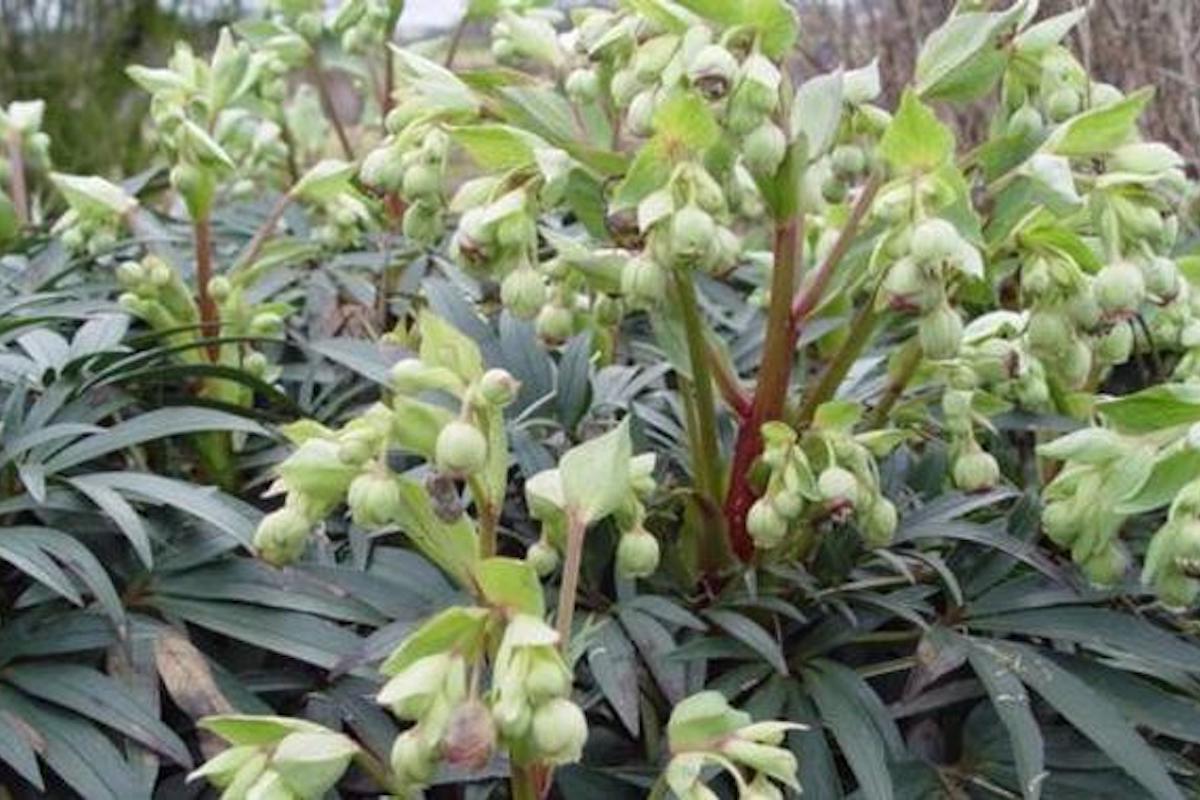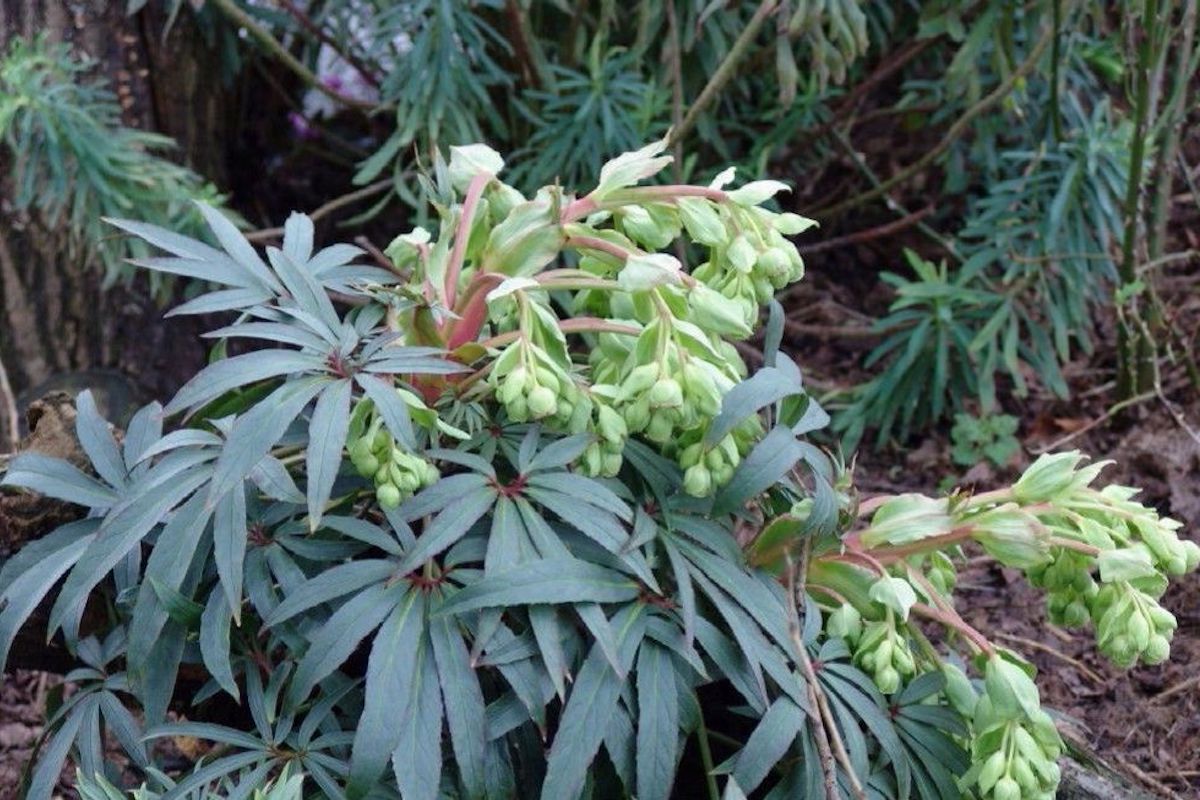Helleborus foetidus Wester Flisk Group
Approx. 0.5 litre pot
About this cultivar:
Helleborus foetidus Wester Flisk Group has strikingly red-tinted stems and leaf stalks with greyish-green leaves. The plant from which the group is derived originated at Wester Flisk on the Firth of Tay, Scotland and was discovered by Mrs Mamie Walker in the early 1970s in her rectory garden. This garden had previously been tended by Rev Dr John Fleming in the early 1800s, who was a Professor of Natural Philosophy at Aberdeen, with a keen interest in botany. It is possible that the professor was responsible for bringing the plant to Wester Flisk from Spain, where similar plants occur in the wild.
I don’t know much about the plants garden performance as it is new to us but it seems it is well liked because it stands upright and the blooms face upright. Fine palmate leaves also.
The foetidus species, known variously as stinking hellebore, dungwort, setterwort and bear's foot, is native to the mountainous regions of Central and Southern Europe yet it is found wild in many parts of England, especially on limestone soil. The specific epithet, foetidus, means fetid or bad smelling, yet, it is not noticeably smelly, although the foliage is pungent when crushed.
- Position: Full sun, partial shade, full shade
- Soil: Almost any soil
- Flowers: January, February, March
- Other features: Dappled Shade or Full Shade Loving, Woodland Plant
- Hardiness: H7 - Hardy in the severest European continental climates (< -20°C), Fully hardy
- Habit: Clump forming
- Foliage: Evergreen
- Height: 30- 45 cm (1 - 1.5 ft)
-
Spread: 30 - 45 cm (1 - 1.5 ft)
- Time to full growth: 2 to 5 years
- Plant type: Herbaceous Perennial
- Colour: Green, blue
- Goes well with: Epimedium or Arisaema. I say plant them on their own or in drifts.
About this genus:
Helleborus (Hel-le-bor-us) comprise approximately 20 species of herbaceous or evergreen perennial flowering plants in the buttercup family (Ranunculaceae) - despite the common name "Christmas Rose". The scientific name Helleborus derives from the Greek name for Hellebrous orientalis "helleboros"; "elein" to injure and "bora" food. Many legends surround this genus; In Greek mythology, Melampus of Pylos used Hellebore to save the daughters of the king of Argos from a madness, induced by Dionysus, that caused them to run naked through the city, crying, weeping, and screaming! Hopefully you just want to use them for your garden.
Gardeners worldwide are enchanted with the genus Helleborus, my father included. Maurice (dad) loves these plants so much, they are everywhere in our garden in Ballyrobert! Personally, I can take them or leave them! (perhaps because I'm not a big fan of the winter!). They are winter-flowering perennials that will grow most places. You may read they don't like full sun, well that is just lazy writers copying American ideas. On these islands we rarely get what Americans will call 'full sun', so plant them where you like. They do, however, look great in a shady woodland garden! Cultivars wary in colour and the nature of the flower stems; some flowers look upright and some droop down. People love the ones the droop down! At the nursery we have many more seed grows hybrids that we have bred (maybe another reason I'm not their biggest fan!). So if you can, do come down and look.
They are often paired with winter bulbs or shade loving plants. Think Epimedium or Arisaema. I say plant them on their own or in drifts.




